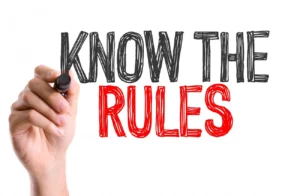 Part of an ongoing series of 5e (2014) Rules notes. See the end of the post for notes on 5.5e (2024) rules.
Part of an ongoing series of 5e (2014) Rules notes. See the end of the post for notes on 5.5e (2024) rules.
This is not a rule, actually, but a design philosophy that went into 5e, which gives it a very different flavor (and advancement path) than earlier versions. If you have no interest, you can skip it, though it does answer some questions about what sort of loot you’re likely to find in treasure hordes.
It boils down to a simple questions: Should Joe Shlub, the peasant, be able to hit Conan the Barbarian with his pocket knife?

Earlier versions would have basically said no:
- Conan’s AC should be waaaaaay too high for Joe Shlub to ever hit.
- So that’s what advanced most when you rose in levels and experience: your AC (by attribute and by powers, esp. magic armor), and your To Hit to counter it (again, through advancement and through +N Swords of Incredible To Hit).
- So Conan has great TH numbers, but he needs them to wrassle with the fantastic AC numbers of the Ancient Red Dragons he’s being thrown against.
5th Edition answers the Joe Shlub question with a yes.
- The goal is that everyone always has a chance to hit.
- So we focus, in advancement and balance, on essentially the other side of the combat equation: damage and HP, the ability to deal it out and the ability to take it.
- So Conan does tremendous damage when he lands a blow … but the dragon has triple-digits of HP.
In short, what most goes up in a 5e game over time is not TH and AC (though they do slowly increase), but Damage and Hit Points. As an example, by the end of the previous campaign we were playing (which brought us to the 19-20 range), we all had a buttload of HP, and the Rogue was doing like 7d6 Sneak Attack damage on top of his weapon. Accuracy and the difficulty of hitting something, instead, stayed within well-guided bounds … i.e., “Bounded Accuracy.”
Joe Shlub can hit Conan — but it’s only ever going to be a scratch. (A mob of Joe Shlubs doing a lot of scratches, aggregating damage output higher than Conan can individually, though … can be a threat, due to the Action Economy.)
WotC has managed all this by putting some mathematical limits on things. Here are some articles that explain it well (the first gets into the not-difficult math, the second into the history):
- D&D 5E – Bounded Accuracy | Dungeon Master Assistance
- Understanding Bounded Accuracy (5e Guideline) – D&D Wiki
The former in particular has the basic design table that drives everything, focused on difficulty to achieve something, and keeping strict caps on it.
| DC or AC | Difficulty | To Break … | Armor | To Hit … |
|---|---|---|---|---|
| 5 | Very Easy | a glass bottle | an inanimate object | |
| 10 | Easy | a wooden chair | No Armor | a badger |
| 15 | Medium | a simple door | Leather Armor* | a troll |
| 20 | Hard | a small chest | Plate Armor** | a dragon*** |
| 25 | Very Hard | a treasure chest | a tarrasque | |
| 30 | Nearly Impossible | a masonry wall(1 ft. thick) | a deity | |
| *with shield and +2 Dex modifier **with shield ***Adult Red Dragon is AC 19 |
||||
This is also why Advantage / Disadvantage is so powerful. It not only simplifies the unruly flocks of plusses-and-minuses that 4e (and earlier) had, it gives a massive jump (roughly +4 in effect) to hit, but temporarily.
The bottom lines:
- There is always a chance you can hit something (a nat 20, if nothing else). It can probably hit you back a whoooooole lot harder, but that’s not the point. As we’ve learned by doing, even a nassssty monster, surrounded by enemies, doesn’t have a long life expectancy (thus, even nassssty monsters are going to have minions to run interference). Again, that’s because of the Action Economy.
- Things that affect TH/Armor are going to be relatively rare and limited. Older systems handed out +3, +4, +5 weapons/armor like door prizes. In 5e, a +1 TH weapon is an expensive and relatively rare thing, available only in big cities. +2 is incredible, and unlikely to be found for sale anywhere. +3 is a thing of legends. You’re a lot more likely to find a sword that bursts into flames and does an extra 1d6 damage than a +1 sword.
This has been your Game Design lecture for today. We now return to your normal programming.
Does 5.5e change anything with this?
Not as far as I can tell. The design foundation of Bounded Accuracy still applies with 5.5e (2024) rules.


3 thoughts on “D&D 5e/5.5e Rules – Bounded Accuracy!”